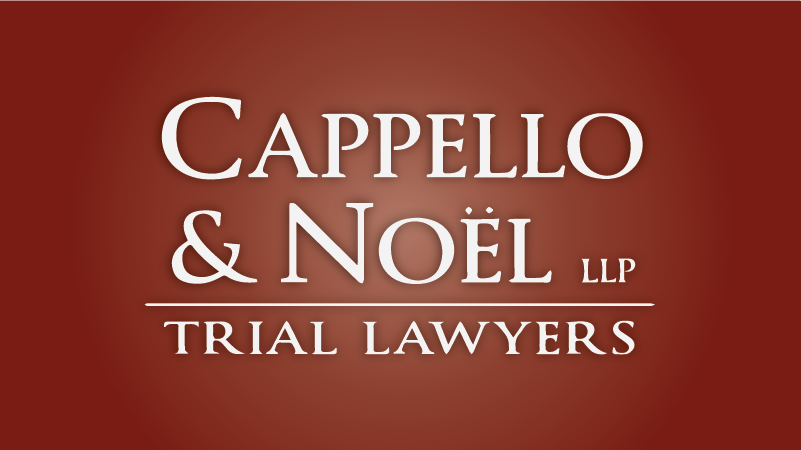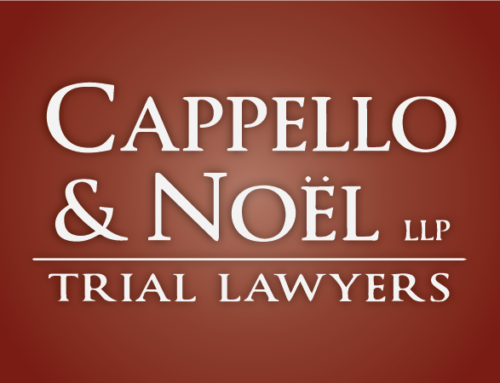Excerpted From California Lawyer
Barry Cappello, the father of lender liability, takes on the nation’s banks and irritates Santa Barbara’s legal community.
Standing in the back of a Los Angeles courtroom during a recess in his most recent case against a big bank, A. Barry Cappello was sounding downright modest about what he had accomplished in his day-long summation.
It’s tough to get jurors whipped into a frenzy in a business case, he says. You don’t have a quad on a gurney that you can roll out there. It’s not like representing a boy burned in a camper fire.
Nonetheless, the Santa Barbara attorney has won more than $57 million in jury verdicts and settlements against some of the biggest financial institutions in the country. He is also the lawyer most often credited, however begrudgingly, with launching the boom in California lender liability cases.
The Los Angeles suit against Union Bank involved a 300-employee manufacturing firm in south Los Angeles. Contempo Metal Furniture Co. v Union Bank (1989, LA Super Ct, No. 529764). The family-held company had borrowed more than $2 million from the bank and hadn’t paid it back. There was no single event that caused the owners any visible injury. They weren’t the sort of plaintiffs, Cappello acknowledged, who would naturally draw tears from a jury.
But during a two-month trial, Cappello used mounds of financial documents to tell a sordid story involving ruthless bankers and incompetent management consultants forced upon his clients. The consultants methodically pillaged the company, Cappello told the jury, before the bank called the loan and cashed in the collateral.
Members of the jury would later say that Cappello went a bit too far at times. They didn’t believe him for a minute when he tried to show that a young loan officer who handled the company’s account was a liar. But that certainly didn’t affect the verdict. After deliberating four days, the jury cancelled the owners’ remaining debt and gave them $12.5 million in compensatory damages. Before the punitive damages phase could get under way, Union Bank settled the case. Neither side will discuss the amount, but there is no doubt which side got what it wanted.
It wasn’t the first time Cappello beat Union Bank. In 1982, he talked a jury into returning a $7.5 million verdict for Lumbermen’s Mortgage Co., which had collapsed after the bank suddenly shut off its access to credit. That was probably the first multimillion-dollar verdict in the nation based on lender liability theory. Other breathtaking verdicts followed, including Cappello’s own $37 million verdict against Bank of America in 1985. In 1987 alone, there were five jury verdicts of $50 million or more. As The Wall Street Journal put it, the trend had bankers quaking in their pinstripes.
Cappello’s success was matched by William M. Lukens of San Francisco’s Lukens, Cooper, Perry & Drummond, who won a jury verdict of $60 million for a strawberry grower in Monterey, and Richard R. Murphy of Lodi, who has successfully handled a string of cases for beleaguered farmers in the Central Valley.
The legal theory behind these suits was really nothing new. They were based on commonplace actions including breach of contract, breach of fiduciary duty, fraud and wrongful foreclosure which allegedly arose when a bank foreclosed abruptly on a loan or meddled in borrowers’ affairs with disastrous results. What made these cases different was a new breed of practitioner capable of showing a jury that behind the paper facade of a loan contract there sometimes lurks a swamp of torts.
Cappello’s law firm is a finely tuned lender liability litigation machine suits against banks constitute 70 percent of his case load. But success is hardly assured. The $37 million verdict, for instance, was knocked down to $22 million by the trial judge, and then thrown out altogether in 1988 by the First District Court of Appeal. Cappello’s most recent suits against the Bank of America have gotten bogged down in bitter litigation over whether his firm should be disqualified from the cases. The Union Bank verdict was a badly needed win, reasserting both the legitimacy of lender liability suits and Cappello’s own reputation as a dragonslayer.
The thing Cappello most wants people to know about him is that he is tough very tough and so is his firm. While other lawyers in Santa Barbara have long since settled into beach chairs to watch the sunset, he likes to say, his firm is moving fullthrottle.
I tell all the people we hire that if you want to go to the beach and live in the sun, don’t come here, he says. It’s like working in a Los Angeles or New York law firm same hours, same intensity, weekend work, 24 hours a day sometimes. In Santa Barbara it’s an absolute aberration.
Cappello says lawyers with his firm put in 2,200 billable hours a year, 25 percent more than the local average, and are paid accordingly. We put in the hours that the firms working against us put in. Otherwise we’re going to get killed, he says.
Word of Cappello’s toughness has gotten around. Michael Ring who used to work with Goux, Romasanta & Cappello, a predecessor to Cappello’s current firm, says a lawyer from another firm once told him they had a policy of automatically doubling their retainer fee when Cappello’s firm was representing the opposing party. He said they knew they were going to earn it. And they did, Ring recalls.
Even Cappello’s harshest detractors and there is no shortage of them have to admire his formidable skills as a trial lawyer. They also acknowledge that he’s successful. The problem is that many despise him for it.
A lot of people don’t like him because he is aggressive and abrasive, which he is, says Ring, an admirer of Cappello even though he left the firm under less than happy circumstances. Their approach is hardball all the way. They will go for the throat. They will go to the limits that they’re allowed, but there’s nothing wrong with that. If it’s within the rules, you have an obligation to do it, if it’s to your advantage, Ring says. In Santa Barbara, a lot of people don’t like that. Cappello is also known as someone who would rather sue than give an inch. He’s the kind of lawyer who requires everything in writing, says another former member of the firm. You’ll hear people say that if you shake his hand, you better count your fingers afterwards.
Critics suggest that Cappello never would have drawn so much hostility if he hadn’t left Los Angeles or New York, where lawyers like him get lost in the crowd. A lot of it boils down to the fact that he’s a slick West L.A. lawyer in a white-bread town, says one Santa Barbara lawyer.
By all accounts, Cappello’s bitterest foe is his onetime law partner, Antonio R. Romasanta. Asked his opinion of Cappello, he says When somebody’s wrong, I go after them. Barry’s that way, too. The trouble with other lawyers in Santa Barbara, Romasanta adds, is that they belong to the club. They don’t want to step on anybody’s toes. Cappello is one of the few exceptions in town, Romasanta says, and he is at least secretly respected for it by many.
I don’t care what you hear people saying about him, he adds. If they ever got into trouble, they’d come crawling up the stairs begging Cappello for help.
Cappello is clearly moved by Romasanta’s endorsement. Growing up dirt poor in Brooklyn is what made him a fighter, Cappello says. When he was 15 his family moved to Los Angeles, where he decided to go into law after poor high school grades in science and math derailed his plan to become a surgeon. About the same time, Cappello discovered competitive debating, and headed irrevocably down the road toward becoming a trial lawyer.
After graduating from UCLA Law School in 1965, Cappello worked as a deputy district attorney in Los Angeles before moving to the Santa Barbara district attorney’s office in 1968. He arrived just in time for the epic legal battle following the 1969 oil-rig blowout in the Santa Barbara Channel, which was until the Exxon Valdez disaster the largest oil spill in U.S. waters. As chief trial deputy, Cappello was head of the litigation team in a suit by state and local governments. The oil company defendants countered with the best legal counsel money could buy, among them lawyers from Melveny & Myers, and Gibson, Dunn & Crutcher.
The case was in litigation for four years. Cappello says he declined the oil companies’ sly offer to admit they were fully responsible, which might have precluded litigation over their degree of culpability. During depositions, Cappello slowly built a case based on statements by the companies’ own drilling engineers that reasonable safeguards hadn’t been used to prevent a blowout. Finding themselves staring down the barrel of a potentially huge punitive damages verdict, the defendants settled on the eve of trial for $9.45 million.
That case was an inspiration, Cappello recalls. I could see that a well-organized boutique firm based in Santa Barbara could act as plaintiff’s counsel and win in major business litigation cases.
Or, as another attorney who has known Cappello for years puts it, he shrewdly sized up the local legal community and realized there was real room for a barracuda attorney in town.
Since his first victory over Union Bank in 1982, Cappello has concentrated on litigating against banks. He says he takes only one of every 20 or 30 potential cases, and pursues those as vigorously as he did the Santa Barbara oil spill suit. He justifies his approach by the toughness of the opposition. Lawyers for the banks engage in and I don’t say this disparagingly scorched earth litigation tactics, Cappello says. They are very smart, very resourceful, and they have unlimited budgets. I really don’t care how egregious an injury might be; if the plaintiff is hammered to death and can’t get it past the motions stage, it’s not worth anything.
In trial, Cappello certainly doesn’t treat banks as his friends. A former member of the firm says Cappello has often described his basic strategy in lender liability cases as the ad hominem approach. That is, he tries to personalize the dispute to show how a loan relationship boils down to a few individuals in a bank who wielded enormous power toward an ultimately evil end.
Given some of the banking practices he has uncovered, Cappello says that hasn’t been hard to do. He told the jury in the Contempo case that Leider & Murphy, $10,000-a-month consultants Union Bank inflicted on the company, were like butchers recommended as cancer surgeons. The two had lied on their resumes, Cappello pointed out, and Leider was an occasional tennis partner of the Union Bank senior vice president who had recommended him for the job. With the consultants running the company, debt to Union Bank shot up from $400,000 to $2 million in a year’s time.
Cappello saved some opprobrium for Union Bank officials. The loan officer, he told the jury, was “literally untrained to do the things she was doing. Yet she was wielding the power over borrowers who had spent their lives building up their businesses.
William V. McTaggart, Union Bank’s lead outside counsel and a partner in the Los Angeles firm of Parker, Milliken, Clark, O’Hara and Samuelian, gave Cappello generally high marks for his performance in the case. He’s a very, very effective lawyer, McTaggart says. His approach was a strong, unrelenting one.



